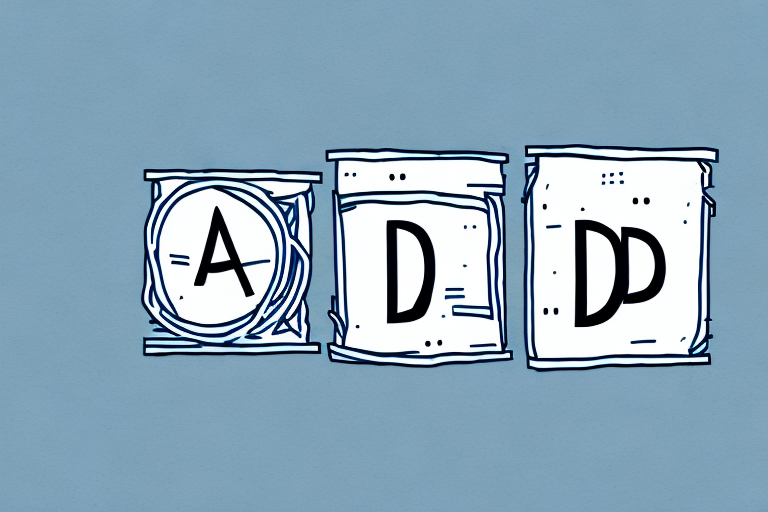Comparing Incoterms DDP and DAP: What's the Difference?
When engaging in international trade, choosing the right contract terms is crucial. One of the most commonly used sets of terms are the Incoterms, or International Commercial Terms. Developed by the International Chamber of Commerce (ICC), these terms define the responsibilities of buyers and sellers in international transactions, impacting cost, risk, and logistics.
Understanding Incoterms and Their Significance in International Trade
Incoterms are a set of standardized rules that outline the responsibilities of buyers and sellers in the delivery of goods under sales contracts. They determine several key factors, including:
- Delivery Point: Where the seller delivers the goods.
- Risk Transfer: The point at which the risk of loss or damage to the goods transfers from seller to buyer.
- Cost Allocation: Who bears the costs of transportation, insurance, and duties.
As of the latest revision in Incoterms 2020, there are 11 different terms, each catering to different shipping scenarios and levels of responsibility.
Understanding Incoterms is essential for businesses involved in international trade as they can significantly influence the overall cost structure and risk profile of a transaction. Misinterpretation or misapplication of these terms can lead to disputes, delays, and unforeseen expenses.
Defining the Terms DDP and DAP in Simple Terms
Delivered Duty Paid (DDP)
DDP means that the seller assumes most of the responsibility, including:
- Transportation costs to the buyer's location.
- Customs duties and taxes.
- Handling all necessary export and import formalities.
This term provides the buyer with maximum convenience but can be more costly for the seller.
Delivered At Place (DAP)
DAP requires the seller to deliver the goods to a specified location in the buyer's country, covering:
- Transportation costs to the agreed destination.
- Export formalities in the seller's country.
However, the buyer is responsible for import duties, taxes, and any further transportation from the delivery point.
The Role of the Buyer and Seller in DDP and DAP Incoterms
Responsibilities in DDP
- Seller: Bears all costs and risks until the goods are delivered to the buyer's premises, including transportation, insurance, and duties.
- Buyer: Receives the goods and handles unloading and any post-delivery processes.
Responsibilities in DAP
- Seller: Covers transportation to the specified destination and handles export procedures.
- Buyer: Manages import duties, taxes, and further transportation from the delivery point.
Understanding these roles ensures that both parties are clear about their obligations, reducing the risk of disputes.
Key Differences Between DDP and DAP Incoterms
Cost Allocation
Under DDP, the seller assumes all costs up to the delivery location, including taxes and duties. In contrast, DAP places the responsibility for import duties and taxes on the buyer.
Risk Transfer
In DDP, the risk transfers to the buyer only after the goods have been delivered to their location. With DAP, the transfer of risk occurs once the goods are ready for unloading at the agreed destination.
Control Over Shipment
DDP gives the seller full control over the shipment process, including documentation and compliance. DAP allows the buyer to manage the final leg of the shipment, providing more control over import procedures.
Risk Allocation in DDP and DAP Incoterms
Risk allocation is a critical factor in choosing between DDP and DAP:
- DDP: The seller retains risk until the goods reach the buyer's premises, necessitating comprehensive insurance and reliable logistics management.
- DAP: The buyer assumes risk once the goods are available for unloading, requiring them to be prepared for safe and efficient receiving of the shipment.
Proper assessment of risk tolerance for both parties is essential in selecting the appropriate Incoterm.
Cost Implications of Using DDP and DAP Incoterms
The choice between DDP and DAP affects the overall cost structure:
- DDP: Typically results in higher costs for the seller due to comprehensive responsibilities, which may be passed on to the buyer.
- DAP: Can be more cost-effective for the seller, but may result in additional costs for the buyer related to import procedures.
Businesses must evaluate their cost capabilities and negotiate terms that align with their financial strategies.
Factors to Consider When Choosing Between DDP and DAP Incoterms
Several factors should influence the decision to use DDP or DAP:
- Destination Regulations: Complexity and cost of import regulations in the buyer's country.
- Goods Characteristics: Size, weight, and value of the goods can impact the feasibility of each term.
- Buyer’s Expertise: Whether the buyer has the capability to handle import duties and logistics under DAP.
- Cost Considerations: Comparative analysis of total costs under each Incoterm.
Careful consideration of these factors ensures optimal term selection tailored to specific trade scenarios.
Practical Applications and Examples
Successful Use of DDP
A technology company exporting high-value electronics might opt for DDP to provide customers with a seamless purchase experience, handling all logistics and duties to ensure timely and hassle-free delivery.
Successful Use of DAP
A manufacturer shipping bulk raw materials to a single, experienced importer may prefer DAP, leveraging the buyer’s capacity to manage customs and transportation, thereby reducing overall shipping costs.
Limitations of DDP and DAP
Both Incoterms have their limitations:
- DDP: May not be feasible in countries with complex or high import duties, increasing costs significantly.
- DAP: Relies on the buyer’s ability to efficiently handle import procedures, which may not always be assured.
Understanding these limitations helps in anticipating potential challenges and mitigating risks.
Best Practices for Implementing Either Incoterm in Your Business
To effectively implement DDP or DAP, consider the following best practices:
- Clear Communication: Ensure that both parties fully understand their responsibilities under the chosen Incoterm.
- Documentation: Maintain thorough and accurate documentation to comply with international trade regulations.
- Professional Advice: Consult with trade experts or legal advisors to navigate complex aspects of international transactions.
- Risk Management: Implement strategies to mitigate potential risks associated with transportation and customs processes.
Understanding How to Negotiate Favorable Terms for Your Business Using Either Incoterm
Effective negotiation involves:
- Assessing Needs: Determine which party is better positioned to handle specific responsibilities and allocate terms accordingly.
- Flexibility: Be open to adjusting terms based on the unique requirements of each transaction.
- Leveraging Relationships: Use established relationships to negotiate better shipping rates or streamlined customs processes.
Negotiating favorable terms can lead to cost savings, improved efficiency, and stronger business relationships.
The Future of International Trade and How It May Impact the Use of These Incoterms
As global trade evolves, several trends may influence the application of DDP and DAP:
- Technological Advancements: Enhanced tracking and automation may streamline logistics, making DDP more accessible.
- Changing Regulations: Shifts in trade policies and regulations could affect the viability of certain Incoterms in specific regions.
- Sustainability Concerns: Increasing focus on sustainable practices may influence transportation and customs strategies under each term.
Staying informed about these trends helps businesses adapt their international trade strategies effectively.
Conclusions and Recommendations for Businesses Considering These Two Options
Both DDP and DAP offer distinct advantages and challenges:
- DDP: Ideal for sellers who want to provide a full-service delivery experience but may incur higher costs.
- DAP: Suitable for buyers who are capable of managing import duties and logistics, potentially reducing overall costs.
Businesses should:
- Evaluate their capacity to handle responsibilities under each Incoterm.
- Consider the specific needs and capabilities of their trading partners.
- Seek professional advice to ensure compliance and optimize transaction terms.
By carefully assessing these factors, businesses can make informed decisions that enhance their international trade operations.






















